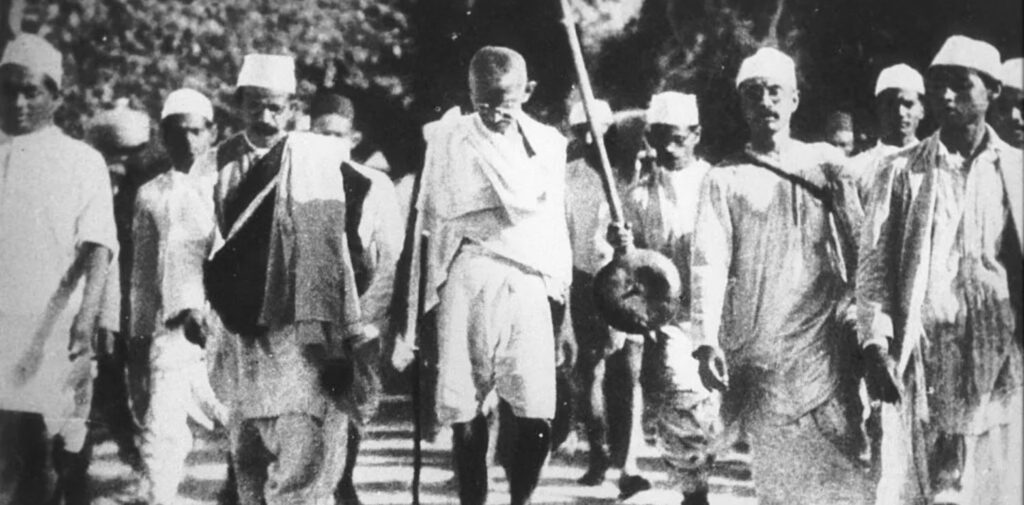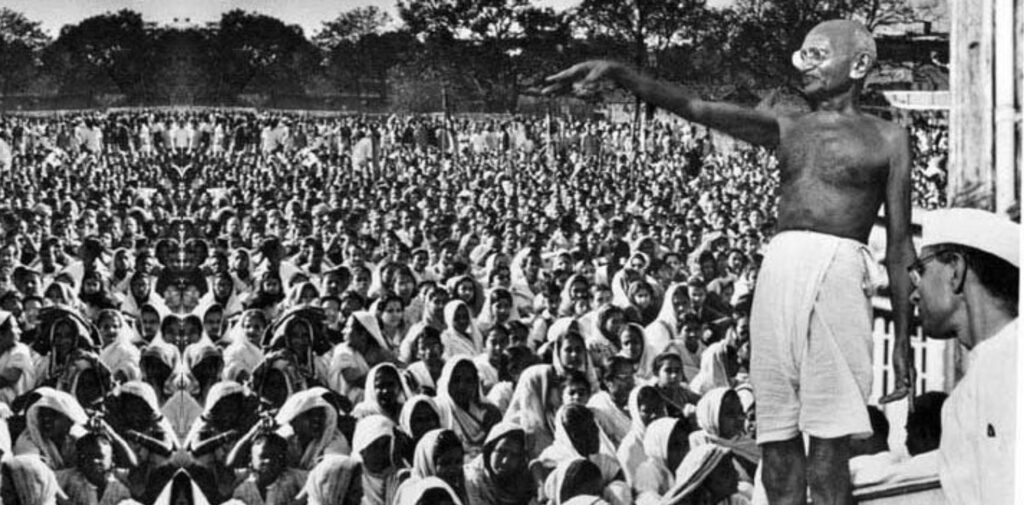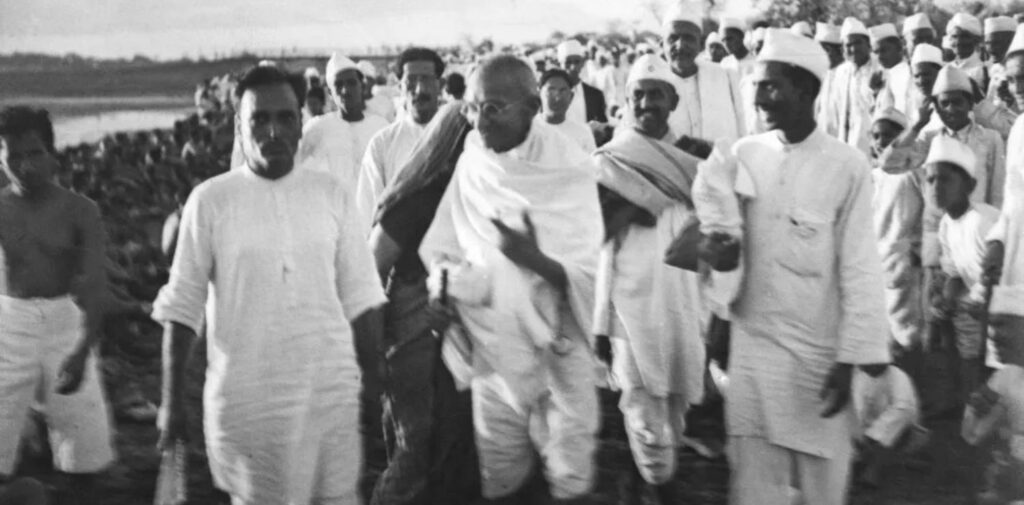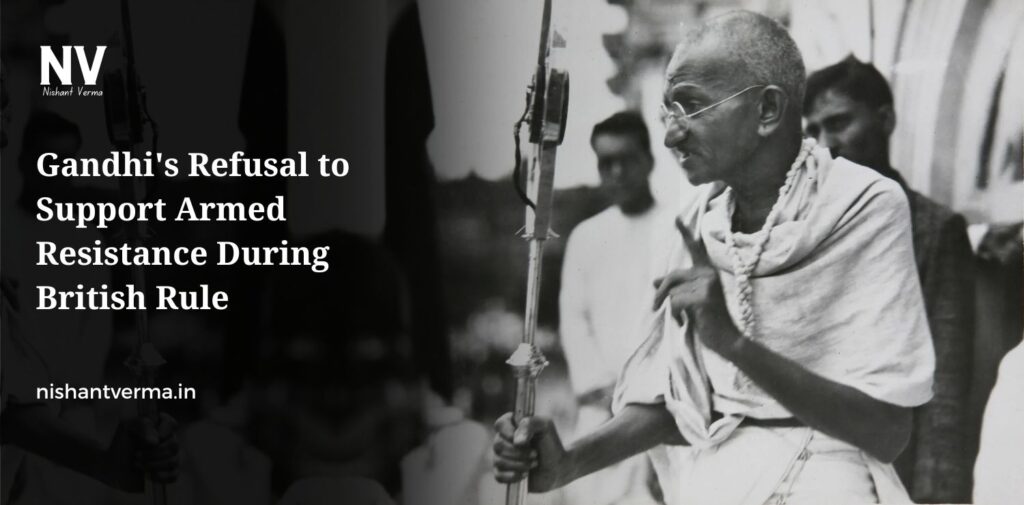Mahatma Gandhi is one of the most respected figures in history, particularly for his leadership in India’s struggle for independence from British rule. He was known for his commitment to nonviolence and peaceful methods of protest, which earned him the title of Father of the Nation in India. Gandhi’s philosophy of nonviolence, or ahimsa, was central to his approach in fighting for India’s freedom. His refusal to support armed resistance against British rule, despite the growing anger and frustration among many Indians, remains one of the most important aspects of his leadership and legacy.
In this article, we will explore why Gandhi refusal to support armed resistance, how his ideas influenced the Indian freedom movement, and what made his methods so powerful in securing independence without violence.
Gandhi’s Philosophy of Nonviolence
At the heart of Gandhi’s resistance to armed struggle was his strong belief in nonviolence. He firmly believed that violence only begets more violence, and that true freedom could not be achieved through bloodshed. His approach was rooted in the idea that one should never harm another person, even in the pursuit of a just cause. For Gandhi, nonviolence was not just a political strategy; it was a way of life, a moral principle that should guide all human actions.
Gandhi’s commitment to nonviolence was influenced by various sources. He was deeply inspired by the teachings of Jainism, Hinduism, and Christianity, all of which emphasize the importance of love, compassion, and peace. Gandhi also studied the works of famous figures like Leo Tolstoy and Henry David Thoreau, who advocated for nonviolent resistance to injustice. His understanding of nonviolence was not passive but active, as he believed that people could resist oppression and fight for their rights without resorting to violence.

The Context of British Rule in India
India under British rule was a land of suffering for millions of people. The British Empire had imposed harsh policies on the Indian population, including heavy taxes, poor working conditions, and economic exploitation. The British also controlled many aspects of life in India, from the government to the economy, and even the cultural practices of the people. Over time, resentment against British rule grew, and many Indians began to demand independence.
However, as the demand for independence grew, so did the frustration and anger of the Indian people. Some individuals and groups, particularly those in the revolutionary movement, believed that the only way to gain freedom was through armed resistance. They felt that the British would never give up power willingly and that violence was necessary to drive them out.
Gandhi’s Response to the Armed Resistance Movement
While many Indians were ready to take up arms against the British, Gandhi stood firm in his belief that nonviolent methods were the only way forward. He understood the anger and frustration that fueled the desire for armed resistance, but he believed that violence would not lead to true freedom. Gandhi argued that armed struggle would only result in more bloodshed and destruction, leaving India in a worse state than it was before.
One of Gandhi’s most famous statements about violence came during the Non-Cooperation Movement in the 1920s. He said, An eye for an eye makes the whole world blind. Gandhi believed that violence could never lead to lasting peace, and that India’s true strength lay in its ability to unite peacefully and resist British oppression through nonviolent means.

The Non-Cooperation Movement and Civil Disobedience
Gandhi’s refusal to support armed resistance did not mean he was passive in his fight for independence. Instead, he launched powerful campaigns of nonviolent resistance, such as the Non-Cooperation Movement in 1920 and the Civil Disobedience Movement in 1930. These movements were based on the idea of nonviolent defiance, where people refused to obey British laws, pay taxes, or participate in the British economy.
In the Non-Cooperation Movement, Gandhi urged Indians to boycott British goods, schools, and courts. He called on the people to spin their own cloth (khadi) instead of buying British-made textiles, which would weaken the British economy. The movement also encouraged peaceful protests, strikes, and demonstrations. This approach of nonviolent resistance was highly effective, as it caused significant disruption to the British colonial system without using violence.
The Civil Disobedience Movement, which included the famous Salt March of 1930, was another example of Gandhi’s nonviolent resistance. Gandhi and his followers marched 240 miles to the coastal town of Dandi to make salt, defying the British monopoly on salt production. The movement was a powerful symbol of India’s resistance to British rule and demonstrated the effectiveness of nonviolent protest in challenging colonial authority.
The Strength of Nonviolent Resistance
One of the key reasons why Gandhi refused to support armed resistance was his belief in the moral strength of nonviolence. Gandhi knew that nonviolent resistance had the power to appeal to the conscience of both the oppressor and the oppressed. By refusing to fight back with violence, the people of India were able to show their moral superiority over the British rulers. This moral high ground was something that armed resistance could never achieve.
Gandhi also believed that nonviolent resistance would unite people from all walks of life, regardless of their background, religion, or caste. It allowed people to come together in a peaceful struggle for a common cause. In contrast, armed resistance could lead to division, violence, and hatred between different communities.
Moreover, Gandhi understood that the British were not invincible. While the British had military power, they were ultimately a minority ruling over a large and diverse population. By engaging in nonviolent resistance, the Indian people could undermine the legitimacy of British rule and make it difficult for the British to maintain control. Gandhi believed that nonviolence had the power to weaken the colonial system from within.

The Legacy of Gandhi’s Nonviolent Resistance
Gandhi’s refusal to support armed resistance during British rule has left a lasting legacy in the world. His methods of nonviolent protest have inspired countless movements for justice and equality around the globe. Figures like Martin Luther King Jr. in the United States and Nelson Mandela in South Africa drew inspiration from Gandhi’s ideas when fighting against racial discrimination and apartheid. Gandhi’s belief in nonviolence continues to influence modern-day movements, such as those advocating for peace and human rights.
Gandhi’s approach was not without challenges. There were moments during India’s struggle for independence when violence seemed to erupt, particularly during periods of communal riots and clashes between different groups. At times, it appeared that his message of nonviolence was losing ground. However, Gandhi remained steadfast in his commitment to peaceful resistance, even when the situation seemed bleak.
Gandhi’s refusal to support armed resistance also did not mean that he was against the use of force in every situation. He acknowledged that self-defense might be necessary in some cases, but he believed that it should always be the last resort. His approach was to promote love and understanding, rather than hatred and violence, even in the face of oppression.
Conclusion: Gandhi Refusal to Support Armed Resistance
Mahatma Gandhi’s refusal to support armed resistance during British rule was a decision rooted in his deep commitment to nonviolence and his belief that true freedom could only be achieved through peaceful means. His philosophy of ahimsa not only shaped the course of India’s struggle for independence but also left a powerful legacy that continues to inspire movements for justice, peace, and human rights around the world. Gandhi’s nonviolent approach was not just a political strategy; it was a moral and spiritual conviction that demonstrated the power of peaceful resistance in the face of oppression.
In the end, Gandhi’s methods proved to be highly effective. India gained independence from British rule in 1947 without resorting to widespread violence. While Gandhi’s refusal to support armed resistance was controversial at the time, history has shown that his vision of nonviolence was a powerful and transformative force for change.




